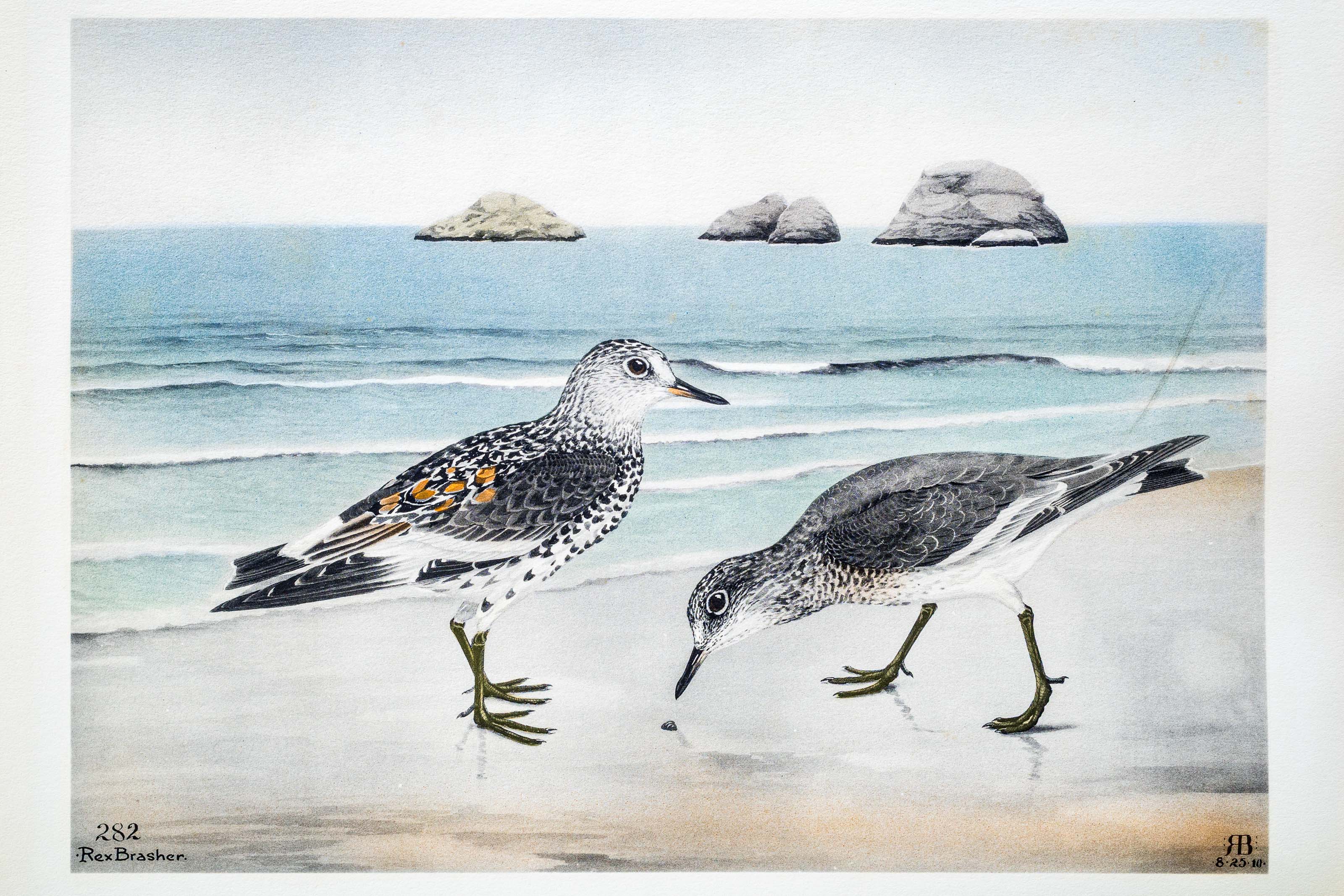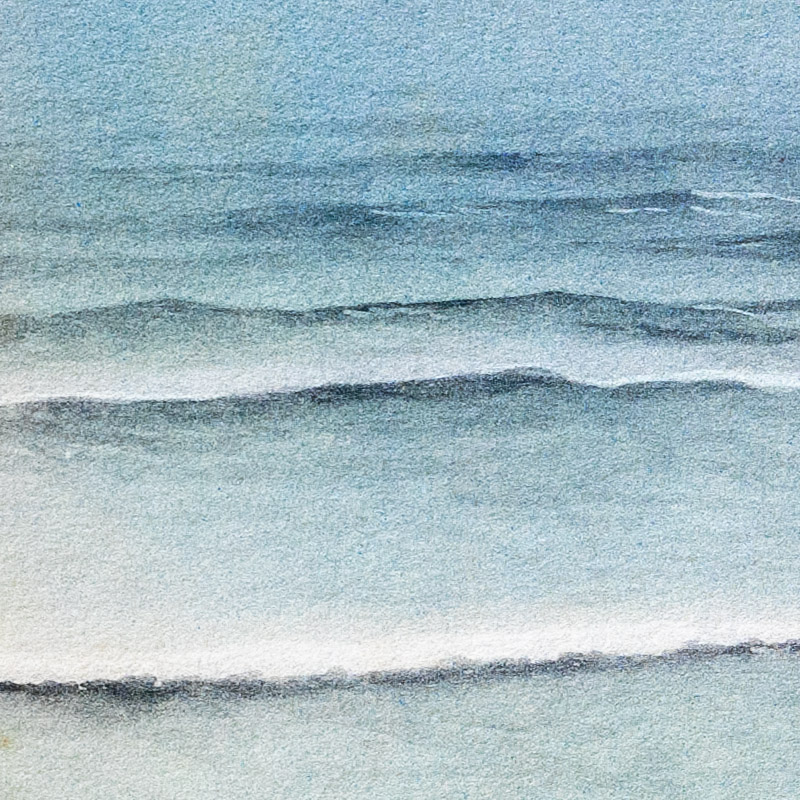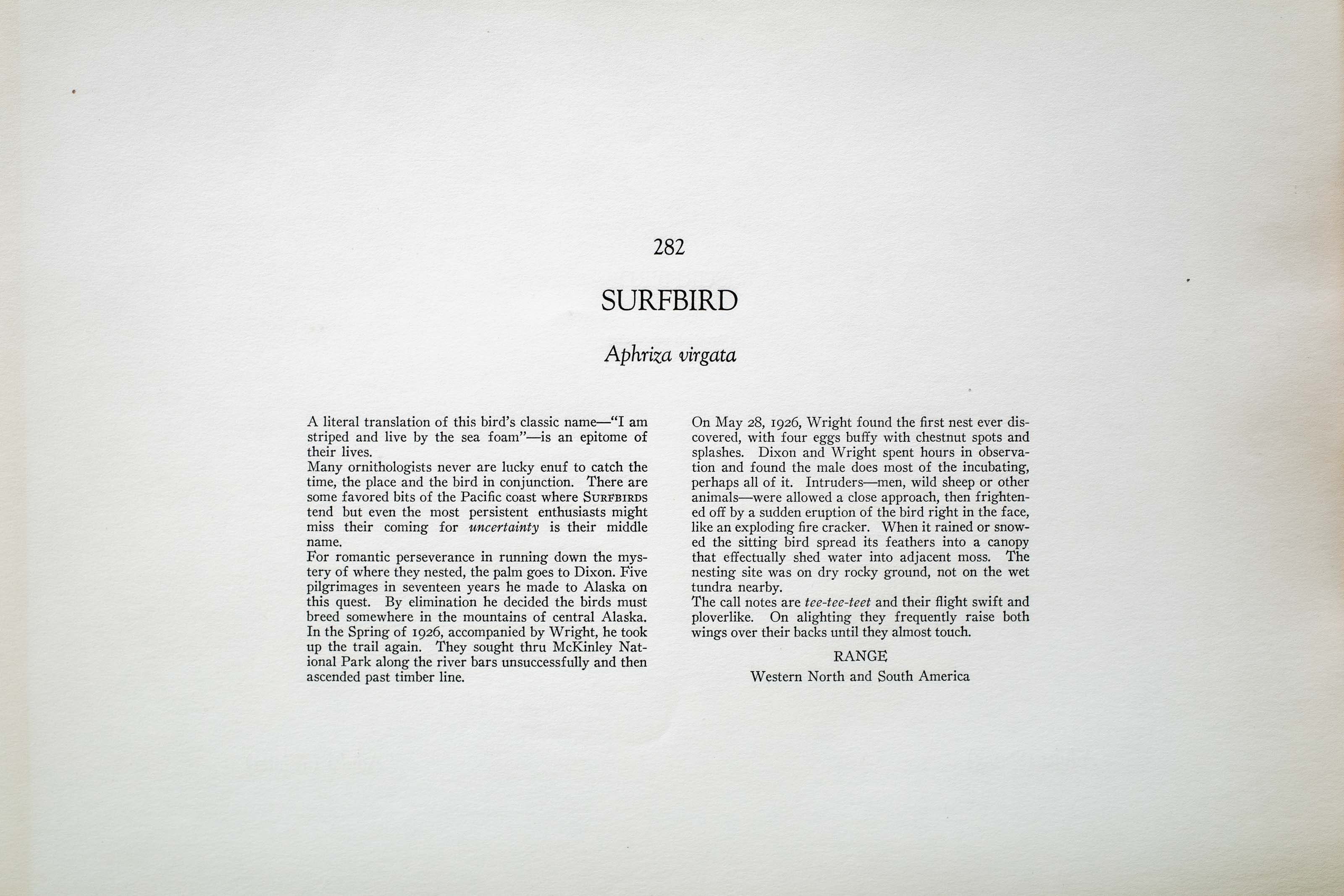






1910
1930
4
282
A team of dedicated board members, volunteers, and student interns has published every page in Volume 9. This volume includes 360 images of paintings and lyrical descriptions of birds, now available online for everyone to enjoy anywhere in the world. This is a monumental task. Each volume requires approximately 400 hours to photograph, edit, transcribe, catalog, and publish online. We need your support to complete this work.
If you're tech-savvy, have a good eye, are meticulous with details, and love structured data, please consider volunteering by emailing us at hello@rexbrasher.org.
We encourage all bird lovers and supporters to consider a monetary donation to support our mission to make Rex's work available for everyone. You can provide a one-time or recurring donation online.
A literal translation of this bird's classic name — "I am striped and live by the sea foam" — is an epitome of their lives.
Many ornithologists never are lucky enuf to catch the time, the place and the bird in conjunction. There are some favored bits of the Pacific coast where SURFBIRDS tend but even the most persistent enthusiasts might miss their coming for uncertainty is their middle name.
For romantic perseverance in running down the mystery of where they nested, the palm goes to Dixon. Five pilgrimages in seventeen years he made to Alaska on this quest. By elimination he decided the birds must breed somewhere in the mountains of central Alaska. In the Spring of 1926, accompanied by Wright, he took up the trail again. They sought thru McKinley National Park along the river bars unsuccessfully and then ascended past timber line.
On May 28, 1926, Wright found the first nest ever discovered, with four eggs buffy with chestnut spots and splashes. Dixon and Wright spent hours in observation and found the male does most of the incubating, perhaps all of it. Intruders — men, wild sheep or other animals — were allowed a close approach, then frightened off by a sudden eruption of the bird right in the face, like an exploding fire cracker. When it rained or snowed the sitting bird spread its feathers into a canopy that effectually shed water into adjacent moss. The nesting site was on dry rocky ground, not on the wet tundra nearby.
The call notes are tee-tee-teet and their flight swift and ploverlike. On alighting they frequently raise both wings over their backs until they almost touch.
Western North and South America.